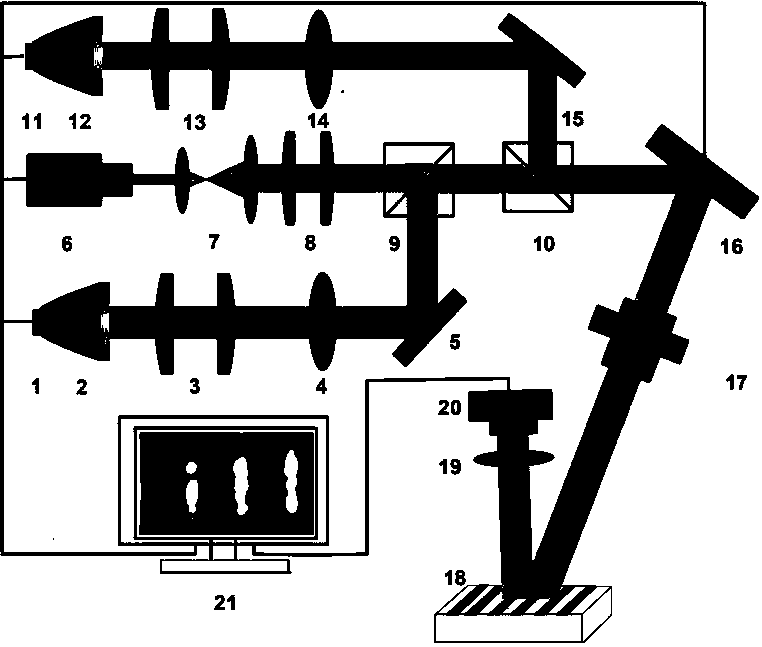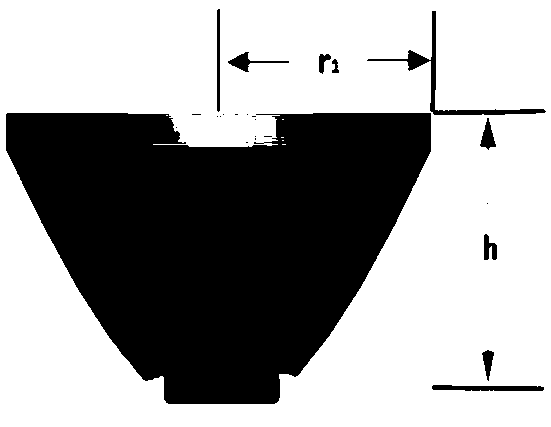Fluorescence imaging system and fluorescence imaging method for quantitative detection of spatial distribution of photosensitizer
A fluorescent imaging and spatial distribution technology, applied in the field of biomedical imaging, can solve problems such as difficult calibration, complex structure, and inability to reflect the concentration distribution of photosensitizers, and achieve the effect of precise positioning
- Summary
- Abstract
- Description
- Claims
- Application Information
AI Technical Summary
Problems solved by technology
Method used
Image
Examples
Embodiment Construction
[0035] The present invention will be further described below in conjunction with the drawings and embodiments.
[0036] Please refer to figure 1 , The present invention provides a fluorescent imaging system for quantitatively detecting the spatial distribution of photosensitizers, which includes a first LED light source 1, a first free-form surface total reflection lens 2, a first fly-eye lens 3, a first integrator lens 4, and a first mirror 5. , The second LED light source 11, the second free-form surface total reflection lens 12, the second fly-eye lens 13, the second integrator lens 14, the second mirror 15, the first half mirror 9, the second half mirror 10. Laser light source 6, beam expander 7, third fly-eye lens 8, digital micromirror 16, projection lens 17, condenser lens 19, CMOS camera 20, and computer 21. The light emitted by the first LED light source 1 passes through the total reflection of the first free-form surface total reflection lens 2 to form a collimated lig...
PUM
 Login to View More
Login to View More Abstract
Description
Claims
Application Information
 Login to View More
Login to View More - R&D
- Intellectual Property
- Life Sciences
- Materials
- Tech Scout
- Unparalleled Data Quality
- Higher Quality Content
- 60% Fewer Hallucinations
Browse by: Latest US Patents, China's latest patents, Technical Efficacy Thesaurus, Application Domain, Technology Topic, Popular Technical Reports.
© 2025 PatSnap. All rights reserved.Legal|Privacy policy|Modern Slavery Act Transparency Statement|Sitemap|About US| Contact US: help@patsnap.com



